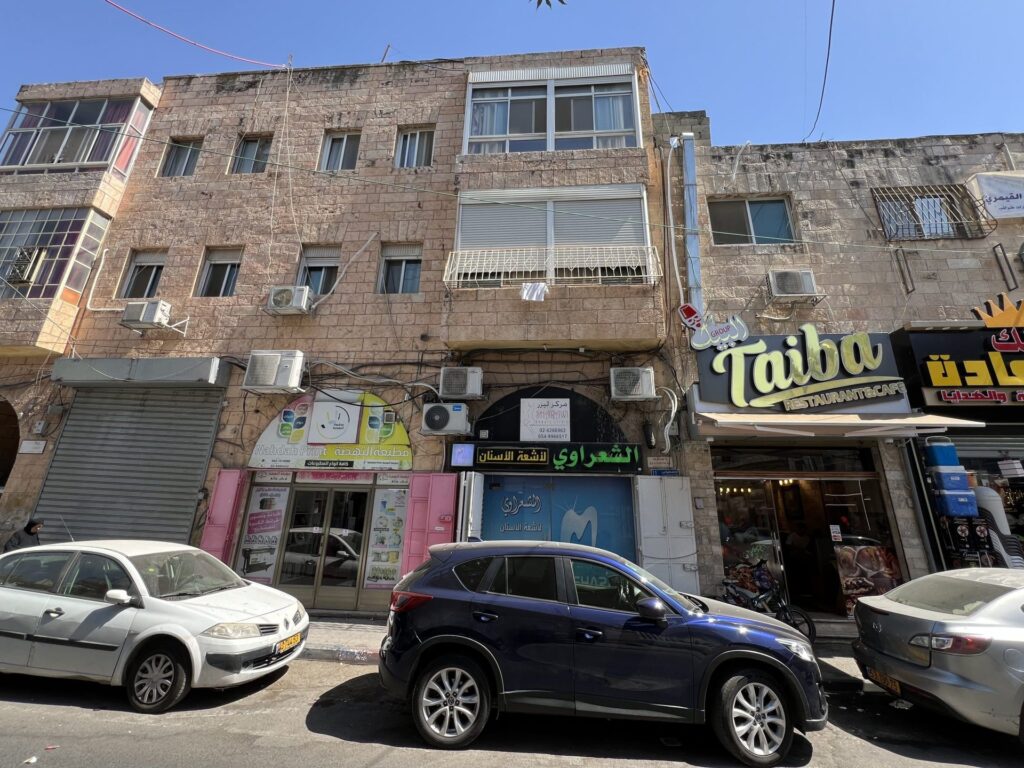“Hanania” was the first Arabic printing press in Jerusalem, owned by Jurji Habib Hanania, the founder of the art of printing and Palestinian journalism. It officially began its work in 1908, and the first Palestinian books and the first Arabic newspapers were printed there, especially in Palestine, which was “Al-Quds Newspaper.”
the site
The printing press was located in the Bab al-Jadid area in the northwestern wall surrounding the city of Jerusalem.
Establishment
She began her work in 1894 without a license, and began printing Palestinian books surreptitiously, until the Ottoman government discovered the matter of its owner, who was able to circumvent it by printing forms and booklets used in official departments, which made it overlook his activity and allow it to continue, and in the year 1908, Ananias was able to obtain On license.
“Anania” was not the first printing press in Palestine, but it was the first classified as an Arab printing press, because the dominant nature of the printing presses at that time was religious or official, and they printed materials that were of interest to members of their religion rather than others.
As for Jurji Hanania, this was not his first work in the world of printing, as before opening his own printing press, he rented machines from their owners, after importing foreign letters to print materials directed to the city’s tourists.
With the official start of the printing press, Gurji Hanania founded Al-Quds newspaper in 1908, and it formed a starting point for the Palestinian press, most of which soon stopped working with the outbreak of World War I in 1914.
The Hanania Press also stopped its work because its owner left the country after the Ottoman authorities discovered his membership in a secret society known as “Palestine the Girl,” an association that began with a cultural nature, but later turned to political activity.
Before the outbreak of World War I, Hanania had decided to buy a modern printing machine and a large collection of papers, after he had mortgaged the old printing machines for sale in order to obtain a loan. However, the war thwarted his dream, and the German Bank in Palestine published news shortly afterward. It indicates that the machines were sold because their owner, who left for Alexandria and engaged in research there until he died there in 1920, failed to pay the loan installments.
History of printing in Jerusalem
The first printing press was established in Jerusalem in 1830, by a Jew named “Yisrael Baq”, and it focused on printing religious books in the Hebrew language. It was followed by a library for another Jew in 1850, and the Jews at that time began to establish many commercial printing presses in Jerusalem and Safed.
Several printing presses of a Christian religious nature were also established, including a printing press in the Franciscan Monastery in Jerusalem in 1846, and the first book printed was “Christian Education” in Italian and Arabic.
Then the London printing press appeared in 1848, which was concerned with printing the Bible and disseminating it among the Jews. Then the Armenians established a printing press for themselves in the Monastery of St. Jacob, and printed books in the Armenian and Turkish languages. After that, the Greek Holy Sepulcher Society was established in 1849, and printed religious and school books in Arabic and Greek.
In 1885, the German Schneller Theodor founded the Syrian Orphanage Press, which printed magazines, newspapers, and books. It opened a professional branch to teach printing in Jerusalem, and its graduates joined many printing presses in Palestine.
After that, Al-Mamouniya Press was established, which contributed to printing the monthly newspaper Al-Ghazal, by Sheikh Ali Al-Rimawi, published in 1876, and Al-Quds Al-Sharif newspaper in Arabic and Turkish. Not to mention the government printing presses established by the Ottoman government in Jerusalem at the time.
Motives for opening Hanania Press
In the editorial of the first issue of Al-Quds newspaper, issued on September 5, 1908, Ananias stated his motivation for opening the printing press in Jerusalem, as he wrote, “Then, when our town of Jerusalem, like others, was thirsty for science and knowledge, the supply of which had been exhausted for many generations, and these were not published and circulated.” Except through printing presses, and all of Jerusalem’s printing presses were purely religious, each working for its own sect. There was a need to establish a printing press that would plant the seeds of brotherhood and treat everyone equally, whose goal was to serve the nation and not be specific to one group or another, but this matter was difficult because of the obstacles and pitfalls that prevented it Which tyranny stood in the way of humiliating and eliminating, and since I was one of those who practiced this industry, my soul prompted me to try to carry out this duty despite its weight, difficulty, and difficult path.
Product of the printing press
Despite her few years of work, she was able to publish 281 books, including 83 in Arabic, in addition to a number of forms and brochures for government departments, and tourism materials.
Al-Quds newspaper
The newspaper published in 1908 consisted of 4 pages, and was published twice a week. At the head of the first page appeared the word “Jerusalem” in large font, surrounded by the words “liberty,” “equality,” and “fraternity.” Each issue was printed in 1,500 copies.
The newspaper focused on science, literature, and knowledge, and allowed readers to contribute useful materials published in the newspaper. Among the contributors were: the writer Khalil Al-Sakakini and Sheikh Ali Al-Rimawi, the founder of Al-Najah newspaper in 1908. The newspaper also allocated space for government news, poetry, and translation.
Complex task
The printing process at that time was complex and difficult, as workers had to install an exact copy of the text on the printing plate, followed by steps that required extreme precision, until the entire page was prepared, then coated with ink and an image of it was copied onto paper.


